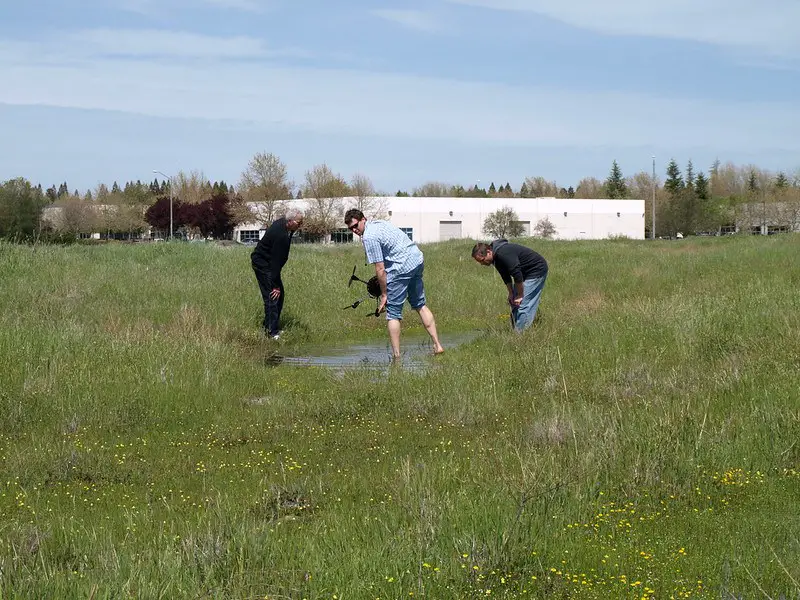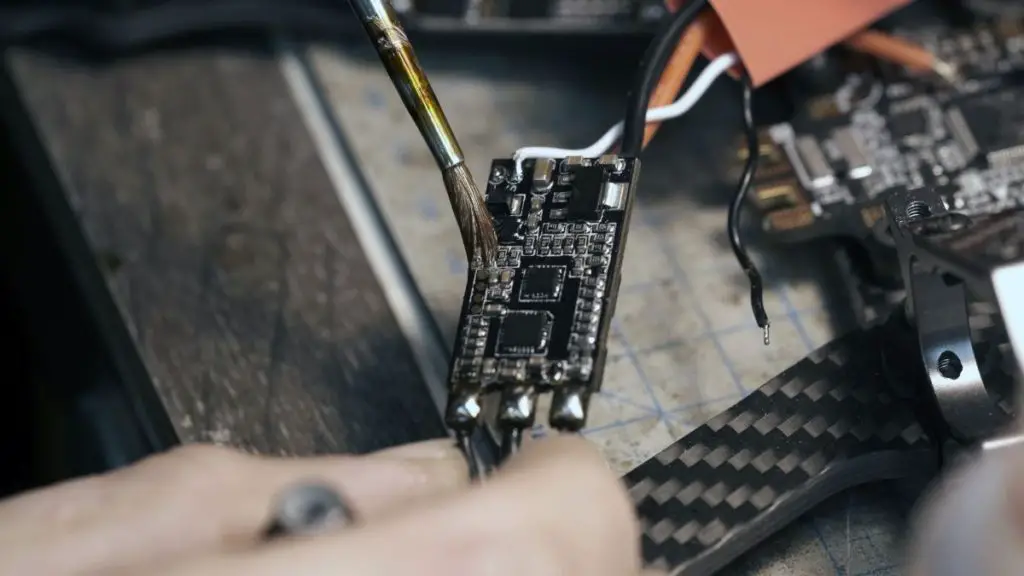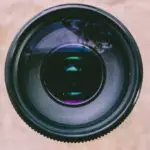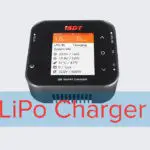We’ve all heard that clear skies are a good indication of optimal flying conditions. But what if the weather isn’t just really on your side? Here’s all that you need to know about flying an FPV drone in the rain.
Flying FPV drones in the rain is not advisable due to limited visibility. It is harder to search for the drone if it crashes, and it may short circuit or be struck by lighting. If you really need to fly in the rain, make sure you waterproof it. Keep yourself under shelter as your radio and FPV goggles are not waterproof.
Let’s drill in a little bit further to see what are the issues with flying your drone in rain and how to manage them. I’ll also teach you how to waterproof your drone.

Can I Fly My Drone in the Rain?
Technically, nothing is stopping you from operating your drone under a sprinkle of rain. But just because you can, doesn’t mean that you should. Or at least without taking proper precautions for you and your drone. Flying a drone in rain is possible as long as you do it mindfully and with preparations.
Consequences of Flying Under the Rain
Not every drone pilot wants to skip a flight day just because the weather isn’t that ideal. Especially if you live somewhere with monsoon seasons where there can be rain throughout a few months! Plus, the additional weather element adds a little bit of fun and challenge to the flight.
However, before you dive into flying under the rain, you should prepare yourself for several outcomes and consequences that your drone might face. That way, you’ll know what exactly you’re getting into and the measures that you’re going to take.
Here are some difficulties that you might face when flying your drone under rain.
Visibility Problems
Whether you’re using an FPV system or not, you should expect limited visibility when flying under rain, especially when your drone can easily get lost within the weather elements.
This is exacerbated in an FPV drone. The water droplet and small debris can easily get in the way of your drone camera, which limits or completely removes your visibility. Once your vision is compromised, it’ll be hard to safely fly your drone.
On top of that, your FPV goggle may fog easily due to the temperature difference between yoru face and the cooler environment. You can reduce the fog by getting a goggle fan or simply apply anti fog solutions on your goggle display.
Losing Control Mid-Flight
It only takes a strong gust of wind for your drone to be swept away. When raining, weather elements can get more unpredictable. So definitely keep an eye out on your flight patterns to help your drone avoid these complications.
When it is raining, it can be quite difficult to search and retrieve your crashed drone. To make things worse, your drone might even crash into a puddle and be further damaged as it is submerged in water.
Complete Damage to the Drone
Weather elements are just the tip of the iceberg when it comes to the complications that you might face when flying under rain.
Just like any device, once you let moisture get inside of its body, the problems that you’re going to face are possibly endless. Drones are built the same way and a lot of market-available drones aren’t meant to be used waterproof or even water-resistant.
If you are using a self-built drone for racing, chances are, your drone doesn’t even have a housing to cover the chips and wiring in order to reduce the overall weight. Water will definitely get onto those electronic components and potentially cause a short circuit, which can permanently damage your drone.
Another potential damage to your drone, although unlikely, is to be struck by lightning. That will completely burn and thrash your drone. Consider yourself lucky if that happens!
What if the Drone Crashes Into A Puddle?

If your drone unfortunately crashes into a puddle as you lose control of it in a rain, it’s not totally over for your drone.
Even if you are 100% sure that your drone is waterproof, you should immediately retrieve your drone. That’s because the impact from crashing may damage the waterproofing feature. The longer it stays submerged in water, the higher the risks and complications that your drone will face.
Here are the steps that you should immediately follow to save your drone if it crashes into a puddle.
Turn off the power supply ASAP
As soon as you get your hands on your drone, immediately remove its battery. Your drone is just like any other electronic where moisture or excessive wetness will cause its components to malfunction.
Take Apart The Drone To Dry Out
Once you’re in a safe and dry place, take out the individual components of your drone and wipe it properly. You might want to rinse those components with clean water to wash off any debris or dirt from the puddle.
Then, let it air dry for a couple of days. If you want to help get the process along, you can use a hair dryer to blow-dry your drone. However, make sure that the air isn’t too hot.
Never plug in the battery until everything including the battery port is completely dry. Don’t try to do a test flight unless you’re completely sure that all the parts are completely dried off.
Once your drone can take off, that doesn’t totally mean that your drone is free from any damages. Your drone might encounter some “invisible” damages pertaining to its internal parts. As a result, that might affect your drone balance, failure in transmitter communication, or more.
Check Your Warranty and Insurance Coverage
Don’t forget to check your warranty or insurance coverage, if you are flying an RTF drone such as the DJI FPV (read also is DJI FPV for you?). Water damages from crashing could be covered by warranty and hull insurance, so there’s a possibility that you might not need to pay for the repairs. However, water damage from deliberately flying in the rain might not be covered by warranty or insurance.
Just beware that your insurer may argue that the damage from water is caused by flying in rain instead of crashing into a puddle, and reject your claim.
Do check on your 3rd party liability insurance and see whether it covers damage caused if you deliberately fly your FPV drone in the rain.
Waterproof and Water Resistant Drone
While it is uncommon, some of the commercially-available drones are waterproof. Of course, you have to pay the price for it! Such drones are usually not racing drones, though, because the main focus on racing drones are aerodynamic and speed instead of waterproofing.
The measurement that is often linked to waterproof is the IP or Ingress Protection rating. IP rating is an international standard used to explain the effectiveness of electrical housing or sealing in protecting your electronics from dust and water ingression.
RTF/BNF/PNF drones may have an IP rating. While they are not necessarily waterproof, some of them are water resistant to a certain extent.
IP rating is represented in the format “IPxy”, where x is the rating for dust protection from 0 to 6, and y is the rating for water protection from 0 to 9. The higher the value, the better the protection.
In the case of water ingression, an IPx7 (x can be 0 to 6) means there will be no water ingression if your gadget is submerged fully in water for up to 30 minutes at a depth of 1 meter; while IPx4 means the gadget is protected from water splashes from all directions.
I personally think that a waterproof drone should have at least an IPx7 rating. Anything below that should be called water resistant instead. To fly in rain though, you don’t necessarily need a waterproof drone. Having a drone with IPx4 or IPx3 (protected against spray up to 60° from vertical) should allow you to fly your drone in light rain.
How to Waterproof Your Drone?
Even if you don’t plan to fly your FPV drone in the rain, it is always good to waterproof it. This will protect it from excessive moisture in the environment. Waterproofing also protects your drone if you crash into a puddle or pond.
While I use the word “waterproof”, the outcome really depends on your skill! Some people can operate their drone submerged water after waterproofing it using the method stated below, but some couldn’t.
Even if you can’t achieve the desired waterproofing effect, it at least provides an additional protection to your drone from water, essentially making your drone resistant to water to a certain extent.
There are 2 ways of waterproofing your drone. The first is via conformal coating, a common method used to protect electronic circuitry, and the other one is via hot glue heat shrink or self fusing silicone tape.
Silicone Conformal Coating
To do this, you need a small bottle of silicone conformal coating. It comes in 2 formulations: aerosol and liquid.
I personally prefer liquid formulation. While aerosol can give a more even layer of coating, it is troublesome in the sense that you need to screen off the parts that cannot be coated, which can be a bit tiny to handle. Moreover, it is harder to reach the nooks and crannies using an aerosol.
You also need a brush (comes with the MSG conformal coat) and a small UV flashlight.
Before you start working on this, make sure you read the label or safety data sheet of the silicone conformal coating. The liquid is flammable and volatile. Make sure you wear proper personal protection equipment and handle it in accordance with the manufacturer guideline. You would also want to work in a well ventilated place for safety reasons.
It is best to coat your component while building your drone. If your drone is used, you might want to brush the electronic components with a soft brush to remove any dusts or debris.
You should first remove all heat shrink and peripherals such as the camera and receiver so that it is easier to work on your drone.
Then, use a tiny brush to slowly apply a thin layer of coating onto your electronic components including the solder joints of your wiring. You should cover every electronic joint on the printed circuit board (PCB), motor-esc connections, connections for batteries and ESC, and all other electrical connections on your FC, ESC and even your camera’s PCB. Remember to coat both sides of your PCB.

Make sure you DO NOT apply the coating onto any of the buttons (eg. boot button or boot pad) or plugs and sockets (including USB port) as it will either freeze the buttons and render them useless, or prevent contact between the plug and socket. Be careful when you coat your camera’s PCB so that you don’t accidentally coat the image sensor!
After finishing coating your electronic component, use a black light to inspect if there are any places that you have missed. Parts coated with the silicone conformal coating should glow when shined by the blacklight. Touch up the parts that you have missed.
The silicone conformal coating should cure in 1 hour or more, depending on the product spec. You can then apply a second layer of coating if you want. Otherwise, you can proceed to replace the heat shrink which you have removed earlier, and assemble your drone.
If you need to replace certain parts later on, you can still rework any solder joint which has been conformal coated. The coated solder can be a bit gummy, and you might need to clean up your soldering iron more often. You can also scrape off the conformal coating on the solder joint before resoldering, but that is optional.
Hot Glue Heat Shrink and Self Fusing Silicone Tape
Marine grade hot glue heat shrink is another way to waterproof your drone components. Simply wrap the components that need to be waterproofed (eg. your FC, ESC) and apply heat to the tube. The tube will shrink and wrap the electronic component tightly due to its glue, making your component waterproof and insulated.
You can use a hair dryer if you don’t have a heat gun to work on the heat shrink. It can take a longer time though, and you might need to put it at the hottest setting. Alternatively, you can use a lighter.
Another option will be self fusing silicone tape, which is more versatile than a shrink tube and doesn’t require heat. Simply wrap your electronic component tightly with the tape. As the name implies, the silicone tape fuses with itself within minutes upon contact, creating a tight wrapping that can stop water ingression.
Compared to conformal coating, marine grade heat shrink or silicone tape can be easily removed by a pen knife if you need to replace your parts.
However, sometimes it is quite hard to heat-shrink or wrap everything. That is why conformal coating is usually the preferred way to waterproof a drone.
What Else Can I Do In Raining Season?
If you crave for FPV in the raining season. a great alternative is to practice in simulator! There are a few drone simulators out there which are quite realistic! With simulators, you can enjoy FPV safely in your home regardless of the weather conditions.
The Bottomline
As much as possible, try not to put your drones under rain unless you’re 100% sure that your drone can take the weather elements by waterproofing your drone. Before scheduling a drone flight and heading out, always check the weather so you won’t experience more than what you signed up for.
Don’t forget to dress appropriately or get yourself under a shelter when you are flying your FPV drone in the rain. It’s hard to control a drone if your fingers are wet or you’re too distracted by the water in your shoes. Moreover, your remote controller or FPV goggle might not be water-resistant in the first place. Most importantly, make sure that you and your drone stay safe.



